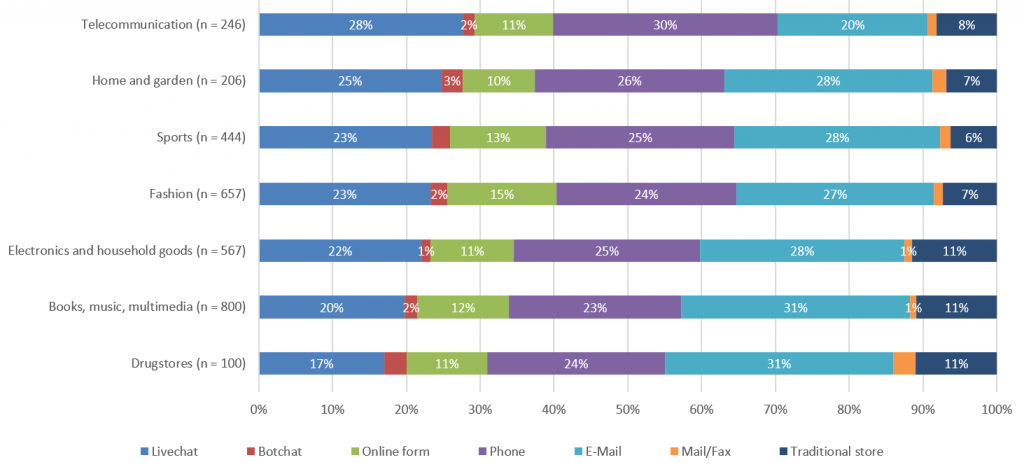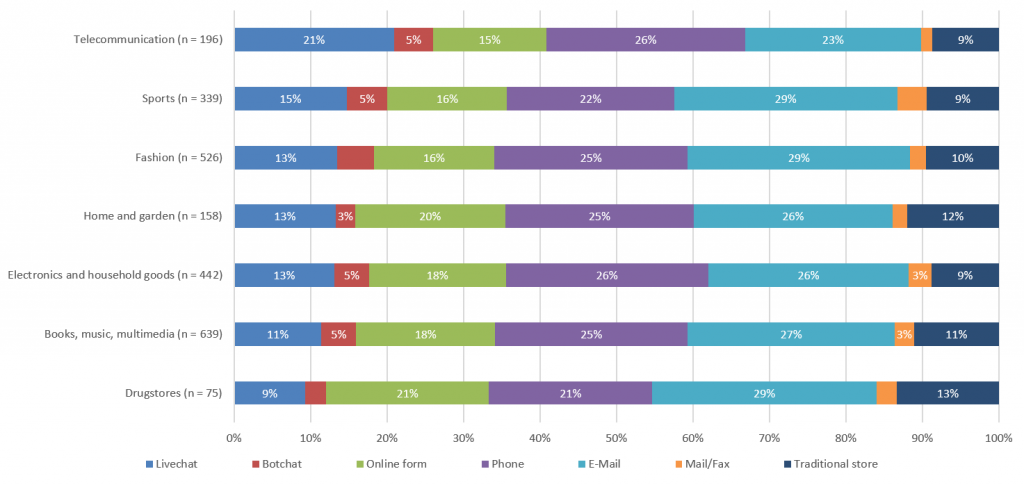- Research platform
Sources of information
Data analysis
Actions
- Solutions
For whom
Problems / Issues
- Materials
Materials
- About us
About us
As part of the Omnichannel 2018 survey, we asked Internet users about their preferred methods of contact with the online store in case of problems before, during or after the purchase. What is the most popular way of establishing communication with the online store? Do these preferences depend on the type of products and/or services purchased? What should online shops invest in to improve the quality of contact and customer service?
Respondents participating in the Omnichannel 2018 survey organized by YourCX have been prioritizing ways of communicating with the E-Commerce website. In the first position, they placed the way of contact, which is the most convenient for them and which they will look for in the first place. Other methods can be considered “emergency”, consumers reach for them in case of problems with contacting the store in a preferred way.
The respondents could choose from a number of communication channels, including:
Below we present aggregate results for seven product categories. Let’s start with the contact methods chosen in the first place:

As you can see, the three most frequently indicated channels are e-mail (from 20% to 31%), livechat
with a consultant (17-28%) and telephone (23-30%). The online form will be selected first by every tenth person surveyed (10-15%). 6-11% of respondents will solve problems with online shopping personally in a traditional store. The least frequently indicated methods of contact are botchat
, which will choose from 1 to 3%, as well as written forms (mail, fax), which only 1-2% of respondents indicated.
Customers of online drugstores are in this group of respondents who are most willing to contact via e-mail (31%). Livechat
will choose only 17% and telephone contact 24% of respondents. A similar distribution of responses can be found in the “Books and Multimedia” category. On the other hand, customers buying telecommunications services use telephone contact (30%) and a chat with a consultant (28%) most willingly.
Below is the distribution of indications into the second choice channel, i.e. the emergency communication method:

This category is also dominated by the willingness to contact by e-mail (23-29%) and telephone (21-26%). In relation to the channels selected in the first place, the share of indications on the form in the online store is growing drastically, which in
the second place is selected by 15-21% of the respondents. The livechat
will be used in the majority of industries by 9 to 15% of respondents, whereas in the case of purchase of telecommunication services it is as much as 21%.
Let’s also look at the distribution of second choice answers among groups of consumers buying telecommunications services, who choose the Livechat channel in the first place (Figure 1 below) and telephone (Figure 2), as well as those who, after purchasing books and multimedia services, will contact the store via e-mail (Figure 3).



More than half of the buyers of telecommunication services, which cannot be contacted by Livechat
, will choose telephone contact (52%). For them, what counts most is the speed of response. On the other hand, those customers who choose telephone contact in the first step prefer Livechat
(56%) and, to a lesser extent, E-Mail (43%) in the second place. E-Mail
message is most often chosen in the first position among buyers of books and multimedia. These people in the second position indicate an online form (42%) and a telephone
contact (44%). The level of demand for contact by Livechat is thus largely dependent on the industry.
YourCX researchers will continue to follow trends related to consumer needs. This year we will be conducting another edition of the Omnichannel survey, which will allow us to better understand changing behaviors. We invite you to follow our social media profiles on Facebook, LinkedIn and
Twitter, where you will always find the latest news from the world of CX research.
Copyright © 2023. YourCX. All rights reserved — Design by Proformat